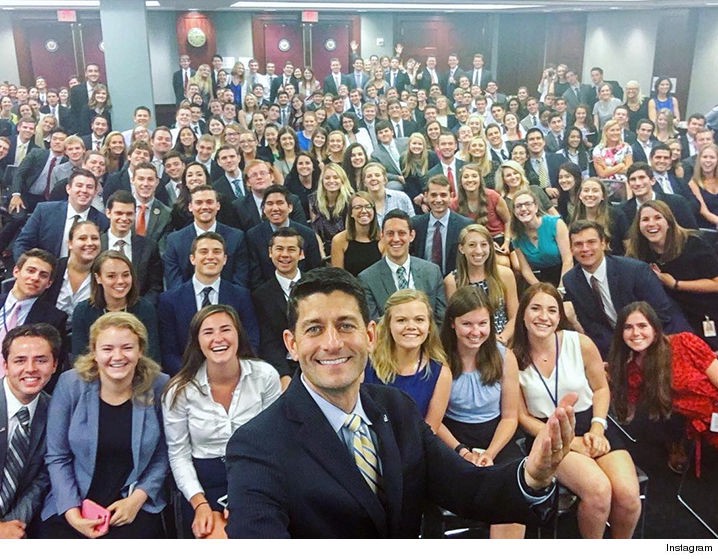How Funding Cuts Make College Whiter
Government slashing higher education budgets adversely affects minorities

I sat through a debate between the College Republicans and College Democrats at the University of Delaware last semester. One of the topics they covered was college tuition. I remember listening to this sweaty peer of mine drone on and on about how colleges shouldn’t be significantly subsidized because they aren’t mandatory institutions. If people can’t afford it, he argued, it’s not for them. There was uncertainty in his voice. I’m not sure if he just wasn’t used to public speaking, or if vocalizing his thoughts aloud led him to realize how fucking insane they were.
There was an uproar in the audience. Someone booed. Someone howled with ironic laughter. Someone threw a tomato. The kid wet himself, apologized for his words, apologized for wetting himself.
No, okay — what actually happened is this: audience members entertained the argument. Because people believe the misconception that the world is just, that everyone has an even hand, that college is equally available to anyone who chooses to work hard enough for it. In reality, this isn’t true.
In 2008, prior to the recession, as a result of the tumultuous economic climate the average state in the U.S. invested 20 percent more in its colleges and universities compared to today. According to research published by Demos, schools have compensated by increasing tuition rates, which means less availability for low-income students. And according to study after study, that also means lower rates of admission for minorities.
In Louisiana, with a 42 percent drop since 2008, funding cuts towards higher education are amongst the worst in the country. The effects are substantial.
Louisiana’s historically black universities are reeling, because of both cuts in funding and higher admission standards imposed by the state. Enrollment at the state’s three four-year public HBCUs is down by a combined 15 percent since 2008. Moreover, the overall number of black students attending Louisiana universities of any kind is down by 8 percent since 2008.
Arizona has implemented the most dramatic cuts of any state. Its investment in higher education is 47 percent below 2008 levels. According to one professor’s findings, the University of Arizona has compensated by increasing their out-of-state numbers and hiking tuition rates. The school has also experienced a significant decline in its rates of black and Hispanic students.
This is all an effect of state spending. The federal government also invests in higher education but typically through aid and research grants. For this reason, cuts in funding at this level have a direct effect on low-income families, or those who depend on financial support. And if Republicans successfully implement their proposed budget platform this year, there will be much less funding available in the future.
This year the budget blueprint introduced by Republicans in the House included shaving federal spending by $6.5 trillion over the next decade. That would have a significant impact on the Pell program, which annually provides direct grants to more than eight million college-going students from families with typical incomes of $40,000 or less. The education advocacy group the Committee for Education Funding, which opposes the cuts, calculates that they would reduce Pell spending by $78 billion over 10 years.
The consequences of slashing funding to the Pell program would be devastating, because contrary to the beliefs of the College Republicans at UD, and apparently the Republican politicians in D.C., accessibility to higher education is vital. According to U.S. News, college graduates between the ages of 25 and 32 make on average $17,500 more than those with only high school diplomas. According to one report in the Department for Business, Innovation and Skills, those with higher education also tend to experience a higher quality of life.
There are exceptions to the rule. Many people do not need higher education to be successful. But shouldn’t kids at least have the option?
Put simply: Without greater access to higher education, the United States is likely to have even greater income inequality, a huge segment of the population will see its income fall and some of our core assumptions about national identity — ours as a land of opportunity, a prosperous democracy — will be at risk.
It’s important to note that there are legitimate arguments to be made against the Pell program. For example, it’s running a surplus and is expected to do so until 2017. But the more important thing to note is that as Republicans propose plans to cut its funding, they aren’t providing alternative solutions. Higher education is simply not one of their priorities, no matter how much research suggests it should be.
When states invest, tuition rates drop. When the federal government invests, low-income students get the support they need. When no one invests, the income gap widens, campuses get whiter, and higher education becomes yet one more exclusive “privilege.”
Yoni Blumberg is a senior at the University of Delaware, and an Awl network intern this summer.
Support The Billfold
The Billfold continues to exist thanks to support from our readers. Help us continue to do our work by making a monthly pledge on Patreon or a one-time-only contribution through PayPal.
Comments